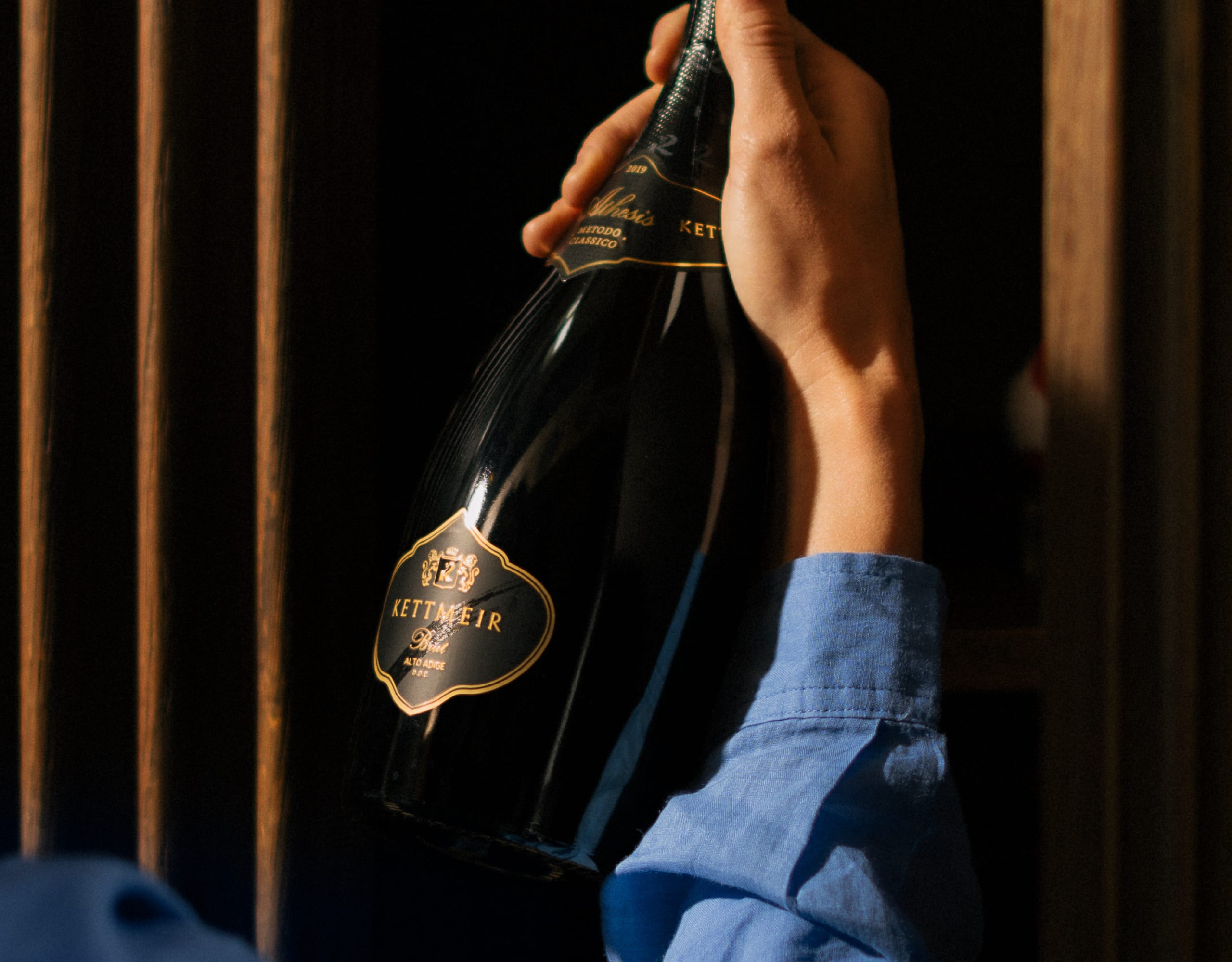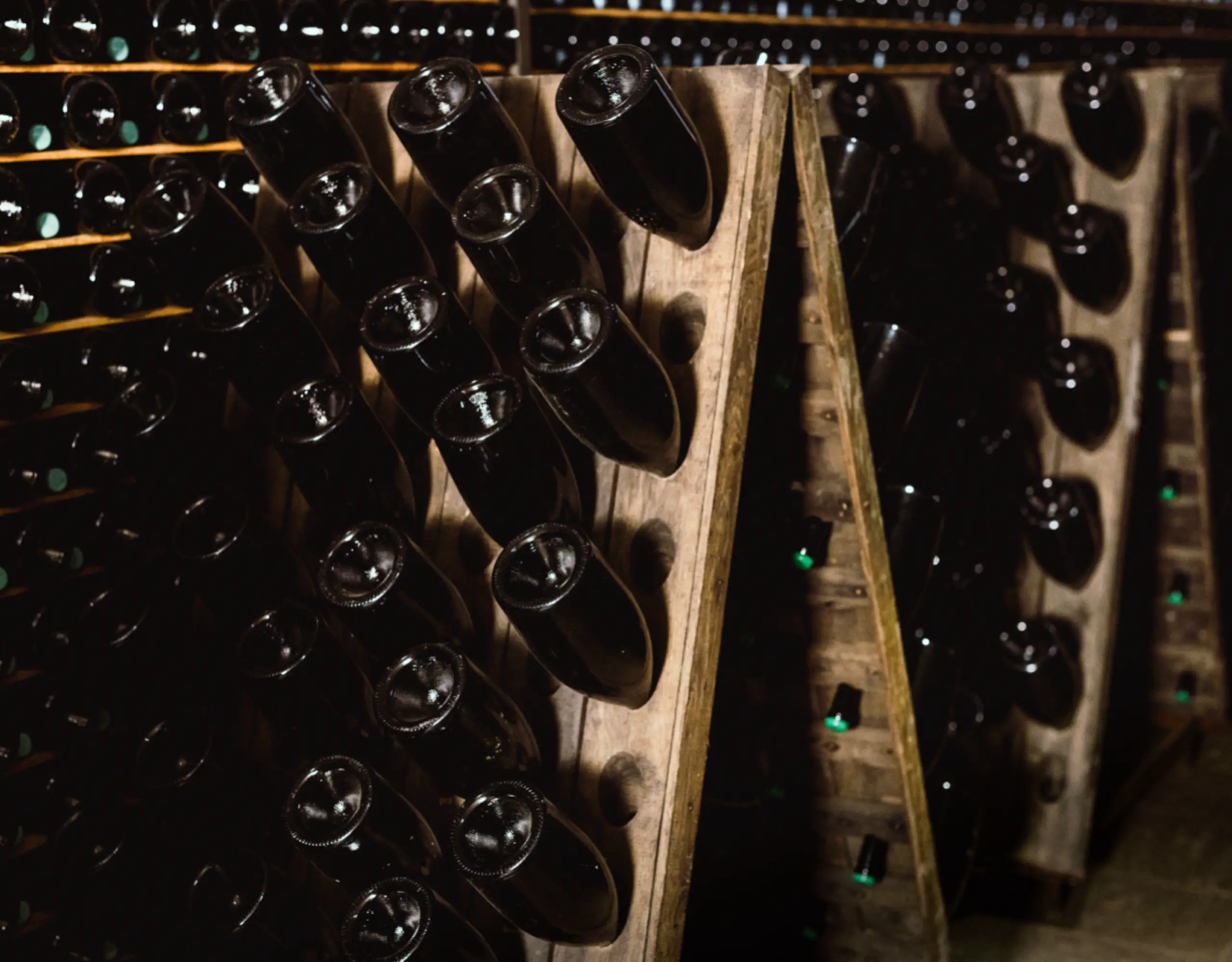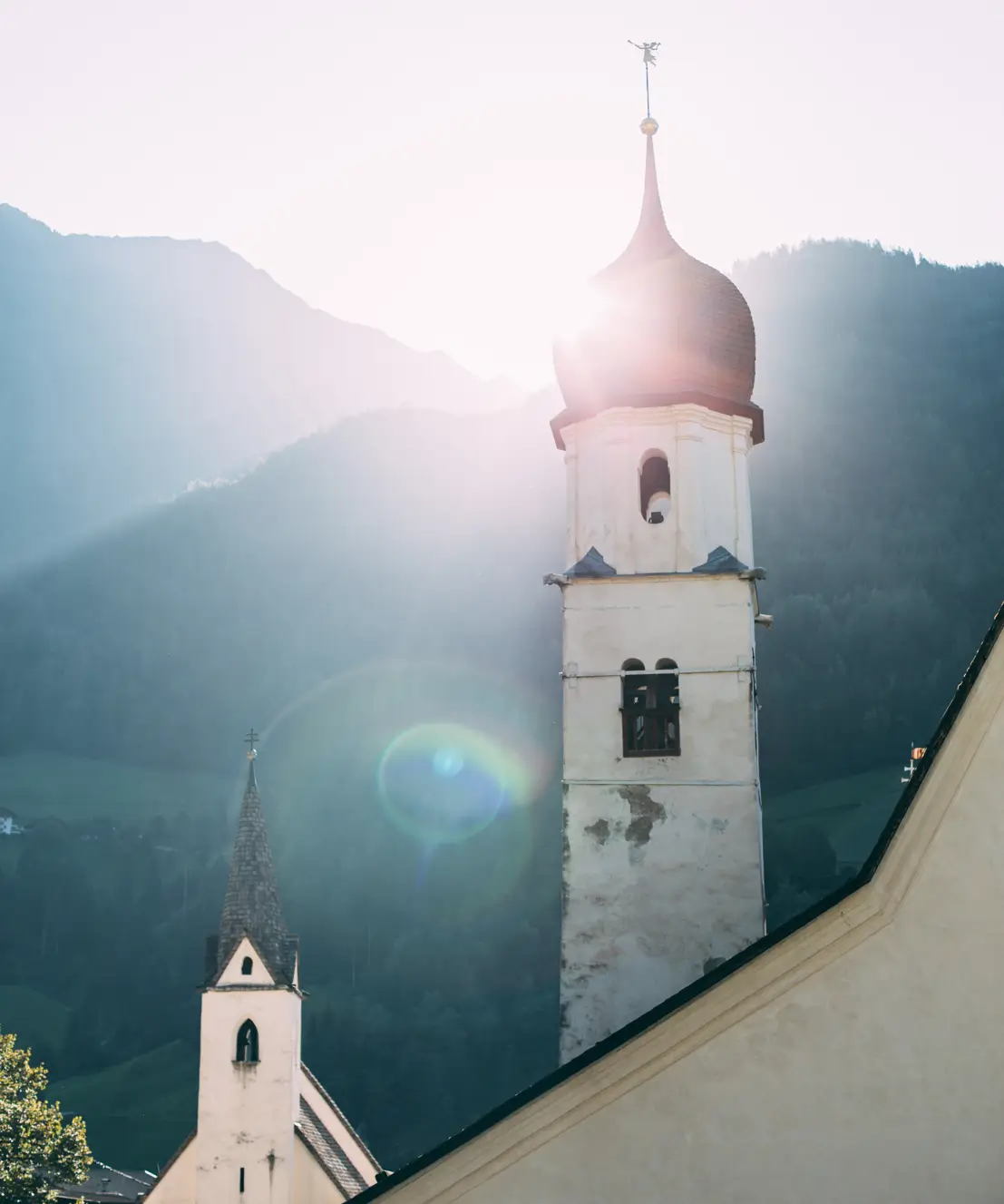Cuvée
We start by filling the bottle with a base wine, prepared in the autumn, to which yeast and sugar (more or less 24 g/l) are added in the spring.
It is a mathematical process: for every 4 grams of sugar we put in, we have 1 bar of pressure, and at the end of fermentation we want to get to about
6 bars of pressure.
In addition to sugar, yeast is added.
The wine is then bottled with a crown cap
and is stacked in the cellar.



